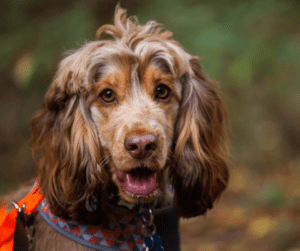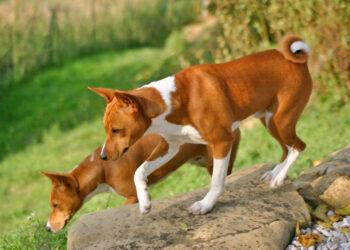Table of Contents
Dog Noise Phobia
Many dogs are afraid of thunder and other loud noises. Our dog Beckett was very afraid of thunder (it was almost funny watching him try to crawl under the bed!). Sunshine, on the other hand, wasn’t all that bothered by it, but was afraid of gunshots and fireworks.
Of our two cats, one is afraid of practically everything and everyone, while the other is just the opposite.
Acclimate Young Animals
Sometimes, a negative experience during their formative weeks can cause a lifelong fear.
The best remedy is prevention, so if you have a young puppy, try to avoid situations that would expose her to loud or sudden noises, such as fireworks at the park.
A noise phobia isn’t always a big problem, but it only takes one moment of panic to cause injury or escape. Some extremely phobic dogs have been known to go through plate glass windows, and fear-induced adrenaline surges can allow them to jump fences they would never even attempt normally.
Unlearning the Fear
Phobias can be unlearned by counter-conditioning. This takes time and patience, but can make a big difference in your dog’s life.
For a number of nervous animals, any loud noise can be a trigger. If you have a dog that is often frightened by sounds or other stimuli, you may want to try this method.
If possible, make or buy a recording of the sounds your pet is afraid of. If it is a fear of certain objects, you can just use the object. If the fear involves people then you will need to enlist volunteers to help you.
The first step is to confirm that the recording will produce a fear response, and to determine the lowest volume level at which this occurs. Turn the recording on with no sound and very gradually increase the volume until you see a response in your dog. Note the level and immediately turn off the recording.
Once the dog has relaxed again, the desensitization can begin.
Allow at least thirty minutes for each session.
Go Slow and Be Patient
Begin by playing the recording at a level below that which caused the fear response. Leave it at this level for five minutes or more and then increase the volume slightly.
At this point, start rewarding your dog for remaining calm. Use extremely tasty treats, petting, praise – whatever will be a great reward for your pet. If he is showing anxiety, turn the volume back down.
After five minutes or more of this, increase the volume again. Always increase in very small increments; you are trying to avoid a fear response, not provoke one.
At some point the dog will start to show some anxiety. If you have been playing the recording at increasing volume levels for thirty minutes or more, shut it off and begin another day at just below the last level.
When you reach the point that elicits mild anxiety, withhold treats and praise and wait for the dog to get calm again. Once he is calm, resume feeding treats and continue to increase the volume.
Once the dog is calm with the volume at what would be the actual noise level, repeat the stimulus in different rooms and different conditions.
In addition to counter-conditioning, certain types of touch therapy may also help. These methods may even be faster.
One method is acupuncture. Another is acupressure, and this you can do yourself. There are a number of books available that give instruction in this ancient Chinese therapy. One that is recommended is The Well-Connected Dog.
Tellington TTouch can also be used. Getting in TTouch with Your Dog addresses the issue of fear.
Herbs and flower essences may also be of help. There are a number of calming remedies on the market, one that works on some dogs is Animals’ Apawthecary’s Tranquility Blend. Melatonin is said to have a calming effect, but must be used before the panic sets in.
Some other herbs that may help are Chamomile, Passionflower, Valerian or Catnip. Different animals will react differently to each, so you may have to test more than one.
The Bach Flower Rescue Remedy is often useful in cases of anxiety and fear. Administer one to four drops directly onto the animals tongue if possible, every few minutes until the fear subsides.
You can also put four drops of the remedy in an ounce of water in a small spray bottle and spray the animals bedding or near the animal. Placing the drops on a cat’s paw is a good way to administer them to felines.
Don’t Encourage Fear Response
One thing you do not want to do is overreact to an animals fear. If you coddle the animal, paying extra attention to her and so on, you end up rewarding the behavior.
This can have the effect of increasing the reaction, rather than decreasing. Instead, just talk calmly to the animal, and pet gently, praising and rewarding as the animal becomes calmer.
You may also like to read: What Should You Name Your Dog?, Small Dog Breeds – Is A Small Dog Right For You ?
If you are a dog lover then, Subscribe to our weekly newsletters. No Spams!








